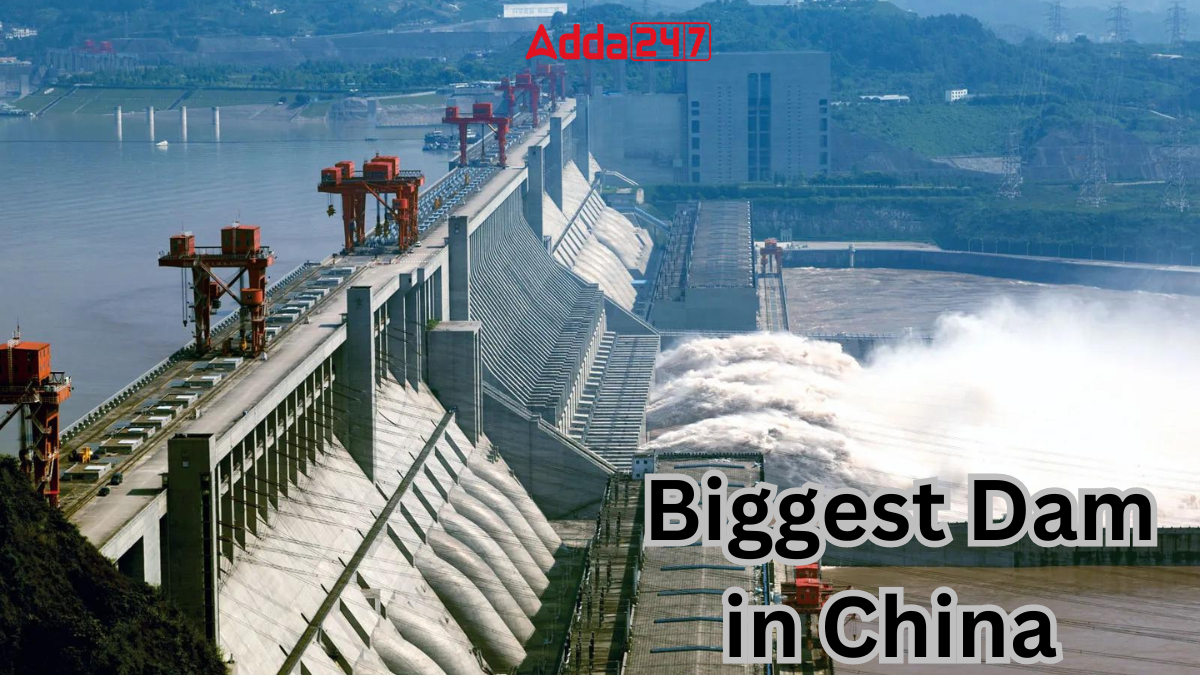China, with its rich history and rapid modernization, is home to some of the world’s largest and most impressive dams. These engineering marvels serve various purposes, including flood control, hydroelectric power generation, and water resource management. In this article, we will delve into the top 10 biggest dams in China, showcasing the country’s commitment to sustainable development and its mastery of large-scale infrastructure projects.
China’s Biggest Dam 2025
As of 2025, the Three Gorges Dam remains the world’s largest hydroelectric facility, dominating the Yangtze River near Sandouping in Yiling District, Yichang, Hubei province, China. This colossal dam boasts an impressive installed capacity of 22,500 megawatts (MW), making it the powerhouse of the world in terms of electricity generation.
In 2014, the Three Gorges Dam achieved a remarkable feat by producing 98.8 terawatt-hours (TWh) of electricity, setting a world record at the time. However, in 2016, the Itaipú Dam surpassed this record, generating an even more substantial 103.1 TWh. Nevertheless, the Three Gorges Dam continues to stand as a monumental engineering achievement, symbolizing China’s commitment to harnessing its natural resources for sustainable energy production on a massive scale.
Key Features of Three Gorges Dam
- Concrete Gravity Dam: 2,335 meters long and 185 meters high, built to hold massive water pressure.
- Huge Reservoir: Stretches 666 km and covers 632 sq km, one of the world’s largest man-made lakes.
- Hydropower Station: Contains 34 generators with a total capacity of 22.5 million kilowatts.
- Navigation System: Includes a ship lock and ship lift to help boats cross the dam.
- Flood Control: Helps manage Yangtze River flow and prevent downstream flooding.
- Electricity Generation: Supplies clean energy to millions, reducing pollution.
- Environmental Impact: Lowers carbon emissions but affects river ecosystems.
- Social Impact: Displaced over 1 million people but improved flood safety and water supply.
Biggest Dam in China – Name
The Three Gorges Dam, situated on the Yangtze River near Yichang in Hubei province, stands as a testament to China’s ambitious engineering endeavors. This colossal hydroelectric gravity dam, officially launched in 1994, holds the distinction of being the largest engineering project in China at the time. Upon its completion in 2006, it claimed the title of the world’s largest dam structure.
Historical Significance of China’s Biggest Dam
- Early Discussions and Feasibility Studies: The idea for the Three Gorges Dam was first discussed in the 1920s, gaining renewed attention in 1953 under the directive of Chinese leader Mao Zedong. Detailed planning commenced in 1955.
- Delays and Resistance: Despite its proponents’ arguments for flood control, inland trade facilitation, and power generation, the project faced significant resistance. Work on the dam was delayed for almost 40 years due to concerns about dam collapse, displacement of millions, and environmental impact. Premier Li Peng finally secured approval from the National People’s Congress in 1992.
- Construction Phases: Construction progressed in phases, with the river being blocked and diverted in 1997, marking the completion of the first phase. The reservoir began to fill in 2003, and by 2006, the main wall of the dam was completed. The final generators were operational by mid-2012.
Physical Description and Capacity
- Structural Magnificence: The Three Gorges Dam is an imposing straight-crested concrete gravity structure, spanning a remarkable 2,335 meters (7,660 feet) in length and reaching a maximum height of 185 meters (607 feet). Its construction involved the use of 28 million cubic meters (37 million cubic yards) of concrete and 463,000 metric tons of steel.
- Deepwater Reservoir and Navigation: The dam’s reservoir, stretching through the Qutang, Wu, and Xiling gorges for approximately 600 kilometers (375 miles), facilitates the navigation of oceangoing freighters. This extensive reservoir allows ships to travel 2,250 kilometers (1,400 miles) inland, connecting Shanghai on the East China Sea to the inland city of Chongqing. Navigation is facilitated by five-tier ship locks at both ends of the dam complex.
- Hydroelectric Power Generation: The Three Gorges Dam is a powerhouse of energy production. Limited hydroelectric power generation began in 2003 and gradually expanded with additional turbine generators coming online. By 2012, all 32 turbine generator units were operational, providing the dam with an unmatched capacity to generate 22,500 megawatts of electricity. In 2020, the hydroelectric plant set a new world record for annual power generation volume at 111.88 terawatt hours.
Controversies and Challenges of Three Gorges Dam
Displacement and Environmental Impact: The construction of the Three Gorges Dam has not been without controversy. At least 1.3 million people were displaced, and numerous natural features, as well as rare architectural and archaeological sites, were destroyed. The dam’s reservoir has been linked to an increase in landslides and earthquakes in the region.
Debates on Flood Control Efficacy: While the dam was intended to protect millions from periodic flooding in the Yangtze basin, its effectiveness in this regard has been a subject of ongoing debate. In 2020, when China faced its heaviest floods in over three decades, officials claimed that the dam mitigated damage and loss of life. Critics, however, emphasized the limitations of the dam as a flood-control tool.



 What was the Old Name of Goa? Know About...
What was the Old Name of Goa? Know About...
 Top-10 Most Searched Words in 2025, Chec...
Top-10 Most Searched Words in 2025, Chec...
 Which Crop is known as the Backbone of I...
Which Crop is known as the Backbone of I...







